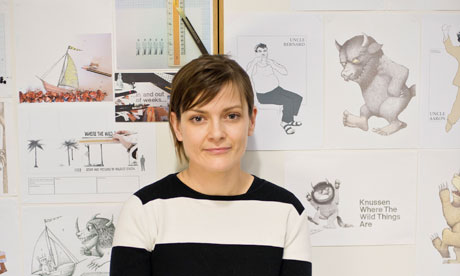
On a cold morning last February, I found myself on the train from New York to Connecticut, on my way to visit Maurice Sendak and talk about the opera versions I am directing of two of his children's stories, Where the Wild Things Are and Higglety Pigglety Pop! Maurice was at his best: funny, acerbic, furious, forthright. We spoke about the operas, his work, his family, politics, news, and his recent hilarious stint on the satirical US TV show The Colbert Report, where he talked about the state of children's literature ("abysmal") and book signings ("dreadful"). He also spoke about his "awful" neighbours, his beloved dogs, the wonderful Lynn who has looked after him for many years, and mostly his imminent death – a favourite topic from a very early age. For this reason, I didn't take that seriously at all. It seemed impossible when he died, aged 83, earlier this month.
"I'm sick of Wild Things," was the first thing Maurice had said to me, the first time I approached him about the project, on the telephone the year before. Knowing he might say no, making the opera project impossible, I explained my ideas and, heart in mouth, asked if I could animate his drawings. He said yes: "I like you and I trust you. Go where your imagination takes you." I almost fainted with joy.
Where the Wild Things Are, about a boy called Max and his journey to a land of monsters that turn hostile, was published in 1963. Although it has become one of the most beloved books of all time, its publication caused a furore, with the child psychologist Bruno Bettelheim warning of its effects on sensitive youngsters. Sendak's subsequent work has had similar reactions: In the Night Kitchen, a brilliant blending of fragments of his Brooklyn childhood, provoked outrage as its boy hero is depicted, for a short time, naked; while Outside Over There, inspired by Maurice's obsession with the Lindbergh kidnapping in 1932, worried parents for being too frightening.
Wild Things and its companion piece Higglety, both under an hour long, were premiered in 1984 by Glyndebourne Touring Opera. Oliver Knussen composed and conducted, while Maurice designed; the wild things took the form of four-metre high puppets, and Maurice's 2D painted sets pitched and yawed to everyone's delight. For reasons that elude me, the pieces haven't been staged here since.
In early 2008, the conductor Ryan Wigglesworth and the soprano Claire Booth introduced me to the operas. I work with live projection and multimedia; they wondered if such an approach might be a solution to the logistical challenges of staging these works, which include not only giant monsters, but also seas, forests, boats, talking pigs, giant babies, nurse-eating lions and cat milkmen. What's more, their creators were giants, too, men of ferocious reputation and international renown. This would not be an easy task. But the operas are so brilliant they take your breath away. How could I not want to do them? I had to stick my head in the lion's mouth.
Before talking to Maurice, I met Oliver at his house in Suffolk. As he towered over me, I explained the idea of live projection, of how visual material can be played like an instrument. I talked, too, about the notion of the staged concert, where the orchestra are on stage but alongside a rich visual world. Oliver told me to call Maurice, which led to that February meeting – and to Maurice saying yes.
Like a million others, I am steeped in Maurice's imagery. Every cross-hatch and marking in his work draws me back to my childhood, which, like everyone else's, was the most complicated, contradictory and sticky place. The only possible way of staging Wild Things was to use Maurice's drawings.
Wild Things the book has only 18 pictures and 388 words; for the opera, Maurice had expanded this into a libretto that allows for a 40-minute work. Higglety Pigglety Pop! – written after the death of his beloved dog, Jennie – is, however, one of his most text-rich works; this he deftly distilled to a brisk, pithy libretto. Oliver's music for both is startlingly original – microscopic in detail but broadly imaginative: the percussion requirements include bespoke clogs and a "balloon with pin".
Since those initial meetings, I have spent day after day in Oliver's soundworld, creating creatures with pointy teeth and yellow eyes, working out how to get a pig to talk or whether a goat should pirouette or leap. I have become very familiar with the wild things, caricatures of Maurice's relatives whom they are named after: Emil, Bernard, Aaron, Tzippy and Moishe (Maurice). We named our last one Olly, for Knussen.
The train to Maurice's house passes through places called Valhalla and Pleasantville. This pretty much sums up my year. Like Max on the shoulders of the wild things, this ride has been exhilarating and nerve-racking – and I've had an incredible view.
• Where the Wild Things are and Higglety Pigglety Pop! are at the Aldeburgh festival (box office: 01728 687110) on 8 and 10 June and at the Barbican, London (020-7638 8891) on 3 November.
• This article was amended on 30 May 2012. Editing changes confused the chronology of the writer's conversations with Sendak. This has been corrected.

